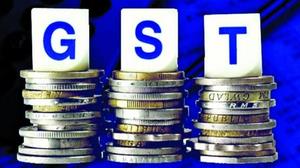GST 2.0: Industry Needs To Swiftly Pass Benefits To Consumers
The GST Council, chaired by Finance Minister Nirmala Sitharaman, on Wednesday rationalised the indirect tax structure, cutting the current four slabs down to two -- scrapping the 12 per cent and 28 per cent rates, while retaining the 5 per cent and 18 per cent slabs.
CII Director General Chandrajit Banerjee said this move on GST reforms is a phenomenal milestone.
"CII not just welcomes the GST Council's forward-looking decisions-moving to two rates of 5 per cent and 18 per cent from September 22, simplifying refunds and MSME procedures, and exempting individual life and health insurance from GST, but also sees this as pathbreaking," he said in a statement.
This clarity will ease compliance, reduce litigation, and give businesses and consumers the predictability they need. By lowering rates on everyday items and critical inputs, the reforms provide immediate relief to families and strengthen the foundation for growth.
"CII strongly holds the view that the industry would swiftly pass benefits to the consumers," Banerjee added.
PHDCCI President Hemant Jain said that the roll-out of GST rate rationalisation from September 22 is a landmark reform that addresses both consumer welfare and revenue efficiency.
By reducing rates on daily essentials such as toiletries, packaged foods, and utensils from 18–12 per cent to 5 per cent, the reform will ease household budgets and stimulate demand, he said.
In agriculture, lowering GST on tractors, tyres, irrigation systems, and farm machinery to 5 per cent will cut input costs and directly benefit farmers, said Jain.
Affordable access to healthcare - through nil GST on insurance, medical oxygen, and diagnostic kits - marks a socially progressive step, while reduced levies on education items will strengthen human capital.
"Equally, bringing down GST on automobiles, appliances, and electronics will boost industry volumes and create multiplier effects in manufacturing and jobs. PHDCCI strongly welcomes these measures, as they simplify compliance, spur consumption, and ensure states gain from an expanded tax base - setting India firmly on the path of growth and inclusivity," Jain noted.

Legal Disclaimer:
MENAFN provides the
information “as is” without warranty of any kind. We do not accept
any responsibility or liability for the accuracy, content, images,
videos, licenses, completeness, legality, or reliability of the information
contained in this article. If you have any complaints or copyright
issues related to this article, kindly contact the provider above.
Most popular stories
Market Research

- Japan Ultrasound Devices Market Size Worth USD 887.0 Million By 2033 CAGR Of 5.4%
- Ecosync & Carboncore Launch Full Stages Refi Infrastructure Linking Carbon Credits With Web3
- Latin America Mobile Payment Market To Hit USD 1,688.0 Billion By 2033
- United States Lubricants Market Growth Opportunities & Share Dynamics 20252033
- Japan Smart Cities Market Size Is Expected To Reach USD 286.6 Billion By 2033 CAGR: 14.6%
- Blackrock Becomes The Second-Largest Shareholder Of Freedom Holding Corp.




















Comments
No comment